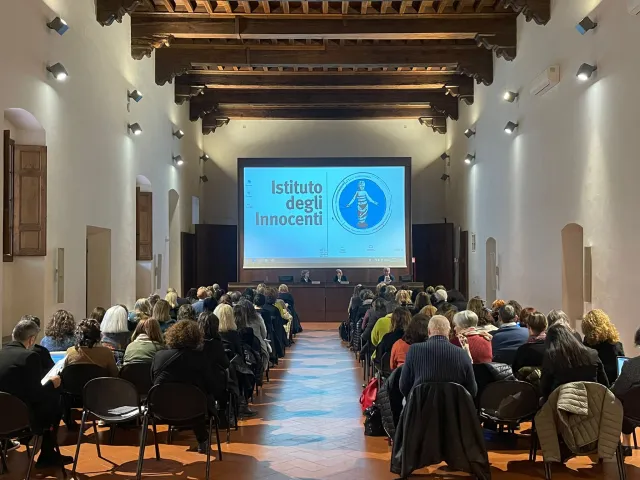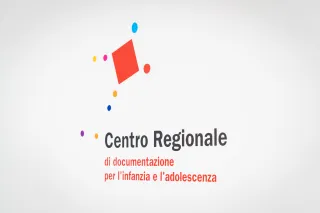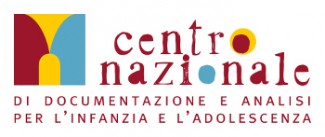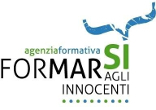Right to Study of Adopted Pupils - the Commission for Intercountry Adoption (CAI) and the Ministry of Education and Merit update their Guidelines
Two days of training for schools at the Istituto degli Innocenti
14 November 2023
Area di attività

From 2012 to 2021, 17,610 children were adopted in Italy, and the age of those adopted internationally has gradually increased over time: in 2020, children over 10 years old accounted for 16% and those between 5 and 9 years old for 55.8%. These children are immediately brought into the school world and it is therefore necessary to ensure that the schools, in parallel with families, provide them with additional tools for a serene personal growth path. To this end, the Guidelines to promote the right to education of pupils who have been adopted, drawn up in 2014, have now been updated to better meet the needs of children, young people, families and teachers. These new guidelines, drawn up by the Commission for Intercountry Adoption and the Ministry of Education and Merit, were the focus of a two-day study and training event hosted by the Istituto degli Innocenti in Florence. The event was promoted by the Commission for Intercountry Adoption and the Ministry of Education and Merit in cooperation with the Institute itself.
The Istituto degli Innocenti has worked for many years with the Commission for Intercountry Adoption to promote a new culture of adoption that is more attentive to the specific needs of children and young people. In particular, it has carried out numerous research and training initiatives on school placement of adopted children. Among others, it is worth recalling the first research on the subject in 2003 and the publication of the book Viaggio nelle scuole (Journey inside Schools), a very useful tool for teachers to learn about the school systems in the adopted children's countries of origin.
The Situation in Italy
Adoptions have long been common in our society: from 2000 to 2018, there were approximately 49,000 internationally adopted children and young people, in addition to approximately 19,000 children and young people adopted domestically. Consequently, the number of adopted pupils in Italian schools has become quantitatively significant. Adoption does not mean that every situation is similar. However, it is undeniable that some risks and vulnerability can be linked to it and they must be taken into account in order to put in place a school reception system capable of guaranteeing the well-being of these pupils.
Critical Areas
In a significant number of adopted children there is evidence of critical areas that must be carefully considered. In particular, these include learning difficulties or psycho-emotional difficulties. Moreover, internationally adopted children may come from predominantly rural countries with fragile social structures, where illiteracy or early school-leaving rates are high. Children from such circumstances may have received little or no schooling. In recent years, there has also been a significant increase in so-called “adoptions of children with special needs” who, therefore, require equally “special” care.
Guidelines for School Inclusion: Good Practices
The document drawn up by the CAI and the Ministry of Education and Merit highlights good practices concerning the school integration of adopted children and starts from those duties and measures that formalise the relationship that pupils and their families have with schools as institutions. Possible problems include the lack of both definitive documentation and tax code when enrolling these children in schools. In this case, submitting an application onlineis allowed with a “provisional code” which, as soon as possible, the school must replace with the final tax code. In any case, since predicting when children arrive in adoptive households is not possible, families are allowed to enrol and integrate their children in school at any time of the year. In the case of national adoptions and in order to avert the risk of traceability, for pupils/students in provisional placement (who therefore keep their original personal data) enrolment is carried out by the foster families directly at the chosen school. Schools are obliged to accept the documentation in the family's possession even when it is not final. It is the school director who, in agreement with the family, decides on the class to place the child. Furthermore, the director, taking into account the opinions of the professionals who follow the child, can also consider the possibility, in special cases, of placing a child in a class one year below the one corresponding to the child's age. With regard to the timeframe for the integration of adopted children and teenagers, the guidelines prescribe that the actual timeframe should be decided by the school director, in consultation with the teaching team, in agreement with the family and with the public and/or private services that support the family in the adoption process.
Relational Communication: Good Practices
The time when every child and, especially, adopted children first arrive at school is crucial for their educational wellbeing. Reception, integration and educational success at school of a child who has been adopted can only be guaranteed through a collaborative process between the family, the school, the local services, authorised bodies and all the other parties involved. In order to facilitate such networking, it is desirable for each school institution to identify a suitably trained contact teacher who can also be of assistance in later stages. After an initial integration period and on the basis of actual abilities, some children may show the need to move to a lower or higher class. Schools must therefore be organised to allow the transition to different classes through specific flexible pathways. However, they should also ensure, where necessary, the development of a customised teaching plan at any time of the year. Another critical issue for internationally adopted children may be related to the new language. In this case, experience in this field points to the support of a tutor and, if possible, a language facilitator as a facilitating factor.
Continuity in Schooling
Even after getting through the first delicate phase of school integration, adopted children and adolescents people may continue to require special attention. It is therefore desirable to implement good practices that facilitate the progress of these children's schooling, such as:
- an accurate exchange of information;
- special care in school-family relations;
- the identification of a teacher within the class council to be a privileged contact for the child and his family;
- early ad hoc interventions when learning difficulties are identified;
- special attention to the relational climate in the classroom.
Lastly, the multidimensionality of adoptions requires that the school integration of children who have been adopted be suitably supported through coordinated work between schools, the families, social and health services, family associations and other parties involved in adoptions.
Last update: 01/24/2024 - 13:19









